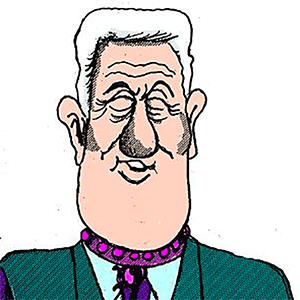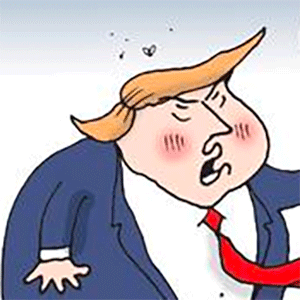Vahe Gregorian: Royals set out to build a downtown stadium. They should still do it.
Published in Baseball
KANSAS CITY, Mo. — Seventy years ago on Saturday, April 12, Kansas City effectively was certified a “major league city” with the debut of the Kansas City Athletics at Municipal Stadium as punctuated by former President Harry S. Truman throwing out the first pitch.
You should read all about it by looking up Blair Kerkhoff’s great recent piece about how the arrival of the A’s catalyzed the thriving sports scene now entwined with the identity of the city.
That very day, Royals owner John Sherman was born in Japan amid his father’s 22-year career in the U.S. Air Force. He would go on to become one of the most substantial philanthropists in the history of the city.
While the origin dates of those twin forces are a quirk of fate, the coincidence also is part of a through-line narrative with at least sentimental value to Sherman — who has had hanging in his office a framed copy of the famed photo.
And each event remains converged at a crossroads — albeit not the ultimately all-too-hasty, vague and ill-fated East Crossroads stadium district proposal Jackson County voters rebuked a year ago this month.
On the one-year anniversary of that jarring election, it’s still a crossroads the Royals should seek to untangle in what might be called the Kansas City spirit ... by doing all they can to make what happens in Kansas City stay in Kansas City proper.
The benefits of that dynamic were exemplified by the building of the Truman Sports Complex in the early 1970s — and all the more acutely in 2007 when downtown was resuscitated by the Power & Light District and what’s now known as T-Mobile Center.
And it was something that Sherman and his ownership group initially articulated as the force-multiplying win-win for the community that unraveled a year ago because of a garbled process in constant flux (financially and otherwise) until virtually the last possible minute.
But don’t let all that went awry confuse the issue: Moving downtown still remains what’s best for the region if the Royals indeed insist on leaving Kauffman Stadium before or when the lease expires in 2031.
Never mind that it’s hard to forecast where the price tag is heading with ever-rising construction costs and the looming implications of the Trump administration’s tariff-mania, or that Kansas City Mayor Quinton Lucas sometimes wonders if “nothing may happen” for a variety of reasons; Sherman repeatedly has stressed that staying at The K as it approaches its 60th year is not an option, and no doubt the gorgeous stadium is antiquated in terms of luxury boxes, player facilities and upkeep resources.
Downtown was the original and best idea
Whether the move would be to Washington Square Park, which from the outside looking in seems a great fit, or elsewhere in the city, that would inherently be preferable to tilting the city — and even regional — momentum by going out of orbit into Kansas with its alluring STAR bonds.
(The STAR bond matter also looms over the Chiefs and questions about their future at GEHA Field at Arrowhead Stadium, but that’s an entire separate topic for another time).
Most of all, because it’s the nucleus from which everything else emanates in the region.
“The future of American cities, and this is why big cities should still be in the game and not give up their teams to suburbs, is that we’re places where people come,” Lucas said in an interview with The Kansas City Star in New Orleans during Super Bowl week. “We’re places that host big events. If we didn’t have an arena, if we didn’t have stadiums, if we didn’t have a convention center, we didn’t have hotels, our whole economic model starts to shift tremendously.”
He later added, “You have to continue to fight for your city being better. And that’s why I think the Royals being downtown is a generational issue for Kansas City and our entire region.”
Yes, of course there are caveats to advocating for the Royals to find a downtown solution.
For instance, you can’t simply say “all things being equal” when it’s impossible to know the disparities in inducements and the various ways and means being discussed. Moreover, the point is entirely contingent on the right plan in the right place this time — including more specifics from the team’s ask even if it seems unlikely there will be a vote this time.
Just the same, the prevailing mindset in the seemingly never-ending posturing or leveraging and gridlock should be how to make this work in Kansas City, per se, instead of the broader regional context.
Just as Sherman made a point of stressing at the Plexpod Westport Commons the night the Royals began their listening tour in December 2022 with a portion of the presentation emphasizing “why downtown?” Asked by someone in the audience if he could “go on record tonight making a solemn promise that the Royals will remain in Kansas City, Missouri,” Sherman replied, “We can do that.”
Just like Ewing Kauffman sure seemed to intend.
Ewing Kauffman’s dying wish
The man who launched the expansion Royals in the wake of the A’s departure, the man whose name is on the stadium and Sherman often invokes as his civic role model, went to vast lengths in one of his dying acts to create a complicated succession plan contingent on keeping the team in Kansas City.
“We’re Kansas Citians,” Ewing said beside his wife, Muriel Kauffman, at a news conference explaining the approach a few months before he died in 1993. “We love it. We think it deserves to keep a major league team, and this is one thing we can do to perpetuate that.”
I take that to have meant to perpetuate in the city, where a tradition not only took root, but also became defined as part of the heartbeat of the area. And I think that means something. A lot, in fact.
But smarter people could disagree on what was intended by Kauffman — who, after all, lived in Mission Hills, Kan. And, OK, Sherman would have no binding responsibility to make good on that interpretation since purchasing the franchise from David Glass in 2019.
For that matter, you could make a fine case that Sherman was liberated from his own spoken commitment to stay in Kansas City, Mo., by the landslide repudiation of the April 2024 vote.
But I’ll say again now what I wrote that night:
The lesson wasn’t that downtown baseball was a fundamentally onerous idea.
What the vote meant
The lesson was that the Royals didn’t have a proper plan, nicely encapsulated by the club unveiling two finalists for the site in August 2023 … only to name an entirely different one just weeks before the election.
I’d still like to see what happened in the parallel universe in which they laid out that site in August 2023 and took seven or eight months to work with their would-be neighbors instead of being in scramble mode.
When I asked Sherman in February what the most notable revelation of the failed vote was, he said having more time to work with that site was “probably the one thing I wish” most.
But just because the execution was lacking doesn’t mean the inspiration years in the dreaming was, too.
And that vision shouldn’t be excluded now.
During a series of interviews with Sherman in 2022, we spoke about what he was envisioning — and, in fact, what he’d had in mind before he even bought the team.
Most to the point, he called the district development concept a “hub for community activity where people live, work and play. It creates jobs. It helps advance public transportation options. It helps develop safe, walkable neighborhoods.”
And, at its best, helps attract more people and stimulate new business and boost the underserved. And then some. Points that needed to be elaborated on more as the process went along but, alas, weren’t.
Why downtown is crucial
Nevertheless, the optimal place that desirable but challenging ambition to spur synergy could be fulfilled is in the city: the epicenter of the area with the most capacity and density and need for connectivity and renewal.
Put in baseball parlance, it’s about being strong up the middle first.
The notion still is a fertile opportunity for a Kansas City on the move, including as a 2026 FIFA World Cup host site, to continue to energize an already vibrant scene into an irresistible one.
Look, I know I’m being naive and perhaps even simplistic about this, especially since the inner workings are a mystery. But why can’t we want the ideal from this?
We know Sherman is a shrewd businessman, as he should be. And that makes it hard not to imagine this inevitably comes down to where the most money is to be found and least to be spent — including because of the practical matter of how to keep a small-market team competitive in MLB’s warped financial scheme.
For all that, though, I also believe Sherman’s win-win portrayal of the possibilities has been as sincere as his civic and philanthropic endeavors would suggest.
And as the clock ticks down toward his recently stated objective of “being able to talk about a specific location” in June or July, perhaps not coincidentally around the time the current STAR bond program sunsets, here’s hoping that just because it’s always about the money doesn’t also mean it’s only about that.
Because the most meaningful long-term payout would be in finding a way to make it work the right way downtown — and keep Kansas City proper a major league city around which everything else here prospers.
____
©2025 The Kansas City Star. Visit kansascity.com. Distributed by Tribune Content Agency, LLC.







Comments